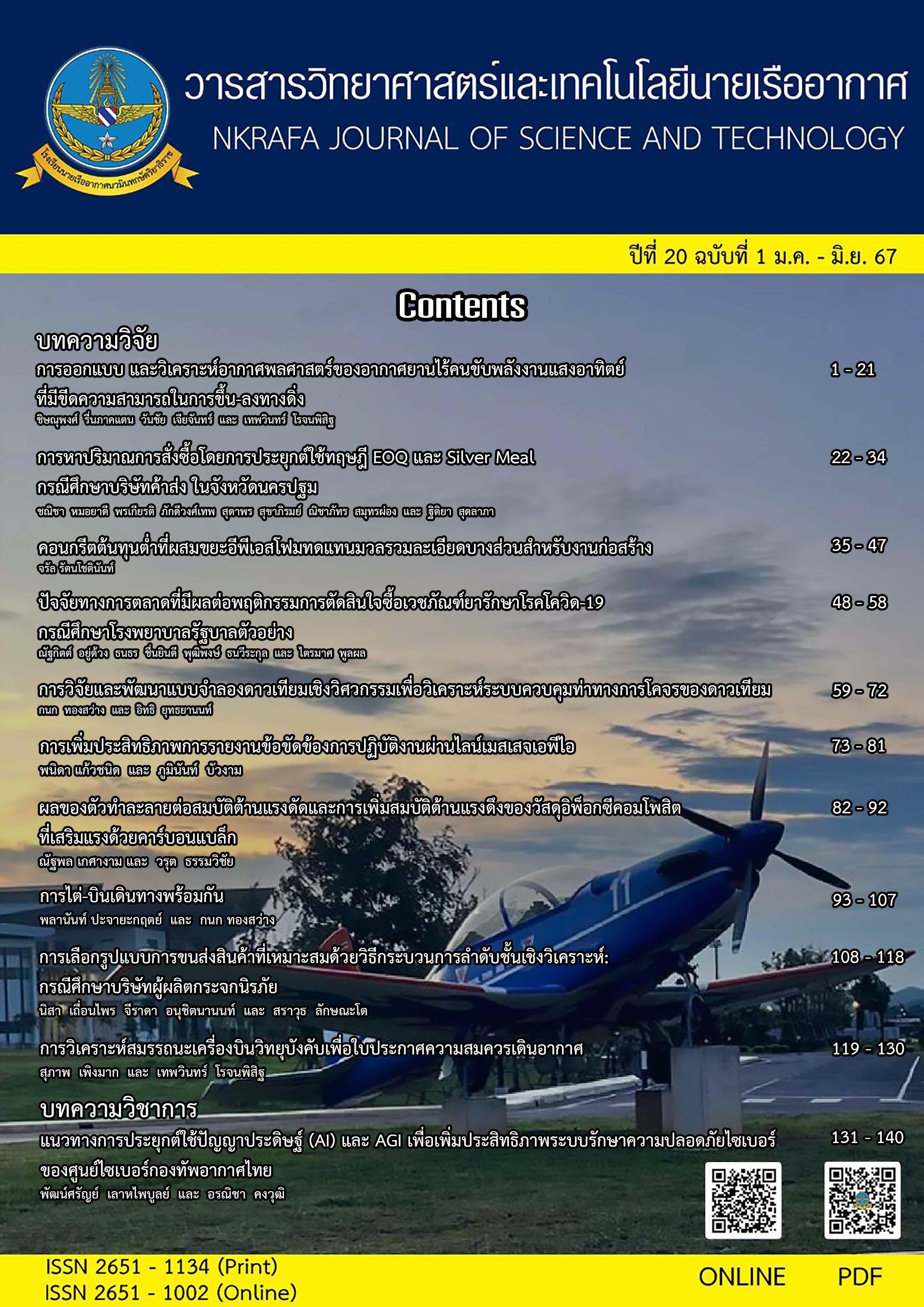Research and Development of Satellite Engineering Model to Analyze the Attitude Determination and Control System
Main Article Content
Abstract
The objectives of the research and development of satellite engineering model to analyze the attitude determination and control system are to study the relevant knowledge in the construction of a 3U satellite engineering model consisting of the structure of the satellite engineering model, command and data handling system (CDHS), electrical power system (EPS) and attitude determination and control system (ADCS). The system interoperability is designed and built into a satellite engineering model focusing on the analysis of the satellite's attitude determination and control system by considering the installation of 3 EA Magnetorquer devices and 1 EA Reaction Wheel. The results of this research resulted in the knowledge of satellite engineering model design and a 3U satellite engineering model, which includes a feature subsystem of design along with being able to pass interoperability testing, Hardware in the Loop testing developed and built a computational program for the analysis of the attitude determination and control system and testing under real environment simulation with Helmholtz Cage that can contribute study findings to future knowledge development and expansion.
Article Details

This work is licensed under a Creative Commons Attribution-NonCommercial-NoDerivatives 4.0 International License.
- Content and information in articles published in NKRAFA Journal of Science and Technology are comment and responsibility of authors of articles directly. Journal editorial do no need to agree or share any responsibility.
- NKRAFA Journal of Science and Technology Articles holds the copyright of the content, pictures, images etc. which published in it. If any person or agency require to reuse all or some part of articles, the permission must be obtained from the NKRAFA Journal of Science and Technology.
References
กองทัพอากาศ. (2563). ยุทธศาสตร์กองทัพอากาศ 20 ปี (พ.ศ.2561 - 2580). ฉบับปรับปรุง ปี พ.ศ.2563.
คณะเจ้าหน้าที่ทำงานพัฒนาและปรับปรุงแนวความคิดในการปฏิบัติภารกิจความมั่นคงด้านอวกาศ. (2564). แนวความคิดในการปฏิบัติภารกิจความมั่นคงด้านอวกาศของกองทัพอากาศ (RTAF Space Security Concept of Operations).
Fortescue, P., Stark, J. & Swinerd, G. (2003). Spacecraft Systems Engineering. Third Edition. West Sussex : Astrium Limited.
Sidi, M. J. (1997). Spacecraft Dynamics and Control. Cambridge : Cambridge University Press.
Fernández, M. V. (2011). Mission Analysis of QB50, a Nanosatellite Intended to Study the Lower Thermosphere. Final Project. Faculty of Applied Sciences, University of Liège.
Narkiewicz, J. (2020). Generic Model of a Satellite Attitude Control System. International Journal of Aerospace Engineering. 2020: 1-17.
Wertz, J. R. & Larson, W. J. (1991). Space Mission Analysis and Design. Dordrecht : Kluwer Academic Publishers.
Anderson Jr., J. D. (1989). Introduction to Flight. Third edition. New York : McGraw-Hill Book Company.
Bate, R. R. (1971). Fundamentals of Astrodynamics. New York : Dover Publications, Inc.
Vallado, D. A. (1997). Fundamental of Astrodynamics and Applications. New York : McGraw-Hill Companies, Inc.
Sellers, J. J. (2004). Understanding Space, An Introduction to Astronautics. Revised Second edition. New York : McGraw-Hill Companies, Inc.
Office of Geomatics. (2022). World Geodetic System 1984 (WGS 84). Retrieved on September 14, 2022, from https://earth-info.nga.mil/index.php?dir=wgs84&action=wgs84
IAGA Division V-MOD Geomagnetic Field Modeling. (2022). International Geomagnetic Reference Field. Retrieved on September 14, 2022, from https://www.ngdc.noaa.gov/IAGA/vmod/igrf.html
NASA Jet Propulsion Laboratory California Institute of Technology. (2022). JPL Planetary and Lunar Ephemerides. Retrieved on September 14, 2022, from https://ssd.jpl.nasa.gov/planets/eph_export.html


